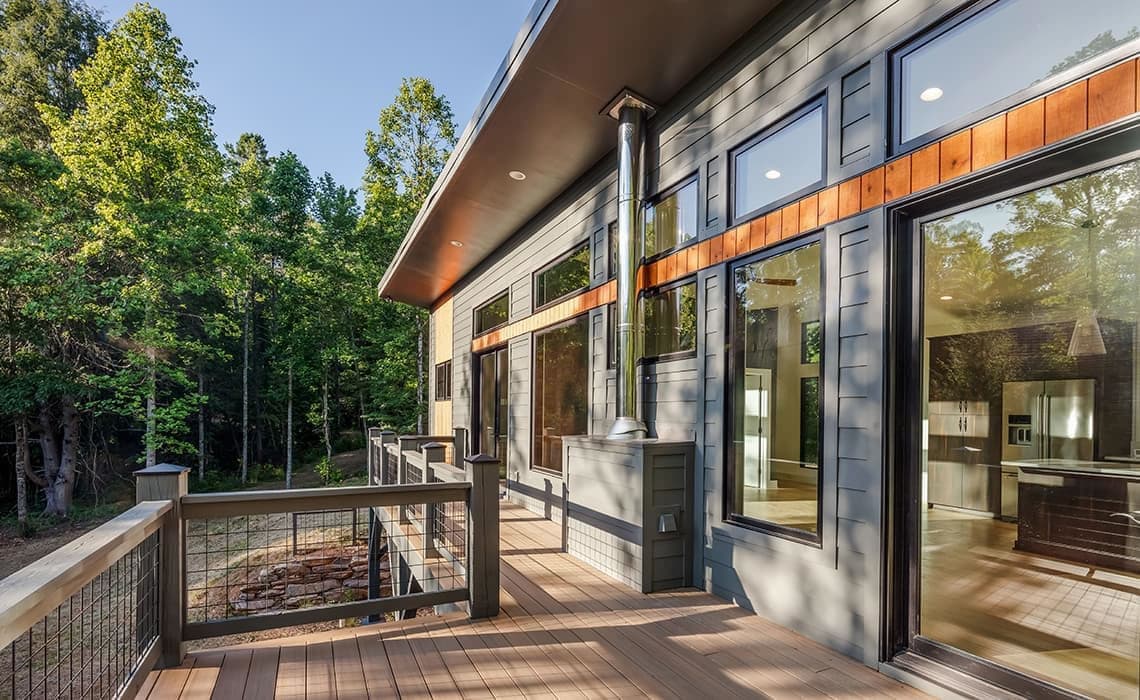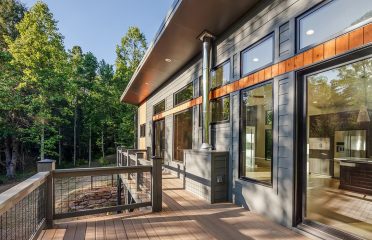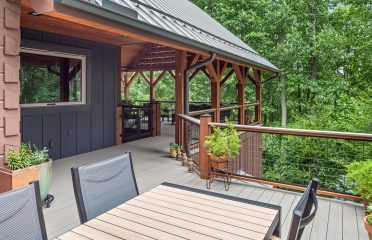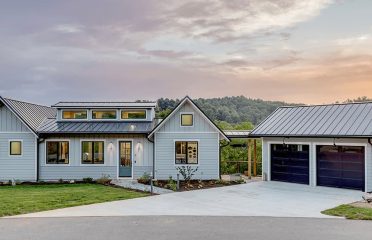Reducing Energy Costs with Passive Solar Gain
One of the goals of a green home is to maximize energy efficiency. One strategy to do that is to design the home to leverage indirect and direct passive solar gain, which is essentially capturing energy from the sun and redistributing it later to help maintain a comfortable temperate inside your home. Let’s look more closely at what passive solar gain is and how it works.
How Passive Solar Gain Works
Many of the custom homes we build today incorporate passive solar design if they’re south facing or mostly south facing. To benefit from passive solar gain, large windows on the south side of the home allow the sun to shine through. The heat from the sun warms a thermal mass, which is essentially a material that retains heat. You’ll often see darker or stone floors, masonry, or a stylish concrete wall used for thermal mass.
The heat from the sun is absorbed and stored in the thermal mass. Over time, the thermal mass will release the heat into the area around as it cools. Have you ever touched a stone wall in the evening after the sun shined on it all day, and the stone was noticeably warm? That stone wall is an example of a thermal mass. Now imagine that warmth being released into your den on a cold winter evening.
In addition to large windows to capture the warmth from the winter sun, which hangs lower in the sky in the winter, you’ll need appropriately sized overhangs, eves, or awnings to deflect the summer sun, which is considerably higher in the sky, to prevent the thermal mass from absorbing heat in the warmer months. So to properly leverage solar gain, you have to account for the sun’s angle throughout the year.
Cool, right?
Three types of solar gain
There are three types of solar gain: direct, indirect, and isolated.
- Direct solar gain is what we described above. We use south-facing windows to capture the sun’s energy where it is absorbed by a thermal mass inside the home and that energy is released later as the temperature cools.
- Indirect solar gain is similar to direct solar gain but instead the thermal mass is between the south-facing windows and the interior living spaces. The most common example of indirect solar gain approach is a Trombe wall. A what?
A Trombe wall is an eight- to 16-inch dark-colored masonry wall constructed on the south side of the home. Glass is mounted about an inch in front of the wall, and the wall serves as the thermal mass collecting heat. Heat from the Trombe wall migrates to the interior spaces where it radiates its warmth. Heat stored in an eight-inch thick stone or concrete wall will migrate at about one inch per hour, so if the wall is absorbing sunshine at noon, the warmth will radiate into the living space at about 8 p.m. - Isolated solar gain refers to a room or space (aka sunspace) that can be isolated from the living area, usually with doors. You might know these sunspaces as sunrooms or solariums.
Heating a home with passive solar gain
There are a few ways to move the warmth released by the thermal mass to other areas of the home:
- Conduction: heat is transferred from the thermal mass to another object, like your feet as you walk across a warm stone floor that served as the thermal mass. Or to the furniture on the stone floor.
- Convection: heat is transferred to other areas of the home typically using ceiling fans or blowers.
- Radiation: heat radiates from the thermal mass, like the stone wall we previously described.
Benefits of using passive solar gain
When a home is sited on an appropriate lot – keep in mind not all lots are ideal for capturing solar gain (i.e. north-facing lots) – and designed to maximize the gain, a homeowner should see reduced energy costs. One of the biggest benefits of using passive solar gain is that passive solar gain puts less demand on the heating and cooling systems, and that brings down your energy costs – sometimes substantially.
More about green building
We have a library of articles dedicated to building green homes for you to peruse. The whole green building library is available on our blog, and this article might be a good place to start:
- Learn ways to reduce your carbon footprint on our blog.
- Read more about our experience as Asheville green builders on our About page.
- Find your green comfort zone here
When you’re ready to build a custom home or commercial project that will reduce your energy costs, we’d love to talk. Click the button below to contact us.







